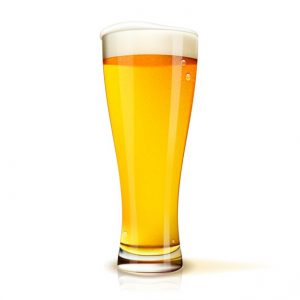
Definitions of “mouthfeel” run the gambit, nonetheless, none do justice to a very complicated subject. UC Davis and alternative universities have researched mouthfeel, attempting to quantify it with a numeric scale, with no success up to now. Craft brewage shoppers have used such descriptors as, a creamy feel in your mouth, AN virtually chewy texture, or a sense that the brewage features a thickness/coating feel that produces the flavour lingering for an instant. altogether example, the beginning of mouthfeel is visual, aromas, taste, and consistent.
Some years ago, I researched and wrote an editorial regarding the importance of mouthfeel in wine. I discovered that consistency isn’t the sole sensation that dictates a nice mouthfeel in brewage, rather a potpourri of things. However, consistency in wine sent an unperceivable message of a “quality” wine.
A cacophony of things set the mouthfeel of craft brewage. an abundance of mouthfeel is set by a human’s accumulated experiences. However, awareness of aromas, visual presentation of a brewery, and flavours are sensory cues that initiate whether shoppers interpret mouthfeel–pleasant or not. Even the problem of your time, place, and seasonality can impact a nice mouthfeel.
The existence of mouthfeel may also be illustrated because of the sensation coming back from any substance in your mouth. As AN example, most of my life I’d not eat oysters owing to the visual and therefore the anticipation of the slimed feel of that class Crustacea in my mouth. My woman won’t eat oysters to the current day, primarily having to try and do with the mouthfeel.
Visual appearances of the brewery conjointly contribute to the anticipated mouthfeel. Foam/head on a brewery is very popular versus very little or no head, craft brewage shoppers like foam. In Europe, shoppers like, and demand brewage served with a thick/tight foamed brewage as a result of its a lot of aromatic and bodes an attractive mouthfeel. The top promotes flavour and instant mouthfeel.
Further, the impact of the surroundings on the mouthfeel. Here is a noteworthy perspective. There are unit restaurants that give “Dark Dining” as a result of analysis has shown that limiting stimuli from surroundings can intensify food and drink aromas, flavour, and mouthfeel. The thesis is that limiting visual commotion and distractions throughout the meal adds to the food experience’s flavour, aroma, and mouthfeel. Dark feeding has simply enough light-weight to examine to eat.
Beer aromas, as in wine, sets the stage for what we’ll experience within the flavours then mouthfeel/aftertaste. These flavours and aromas are typically visually conferred in ‘flavor and aroma wheels’ to assist North American nations to outline brewage designs we tend to like. The ever-present “Beer Flavor Wheel” was developed within the ‘70s by Jelly Roll Morton Melgaard, of which he enclosed the Mouthfeel element. The truth is mouthfeel provides substance/recognition to a beer’s flavour whereas aroma sets the stage.
Note: Hops and yeast offer aromas, flavour, appearance, and mouthfeel to brew. The grain bill presents the grain that has one thing that the yeast will exert their creative thinking with.
The chemical action of fermentation (working on the wort) plays a massive role in making mouthfeel. Fermentation provides North American nation texture/viscosity, pervasion, alcohol levels (ABV), and acids. Of course, to urge a signature mouthfeel, all of this should be a musical group by knowledgeable brewers choosing the right yeast.
Ms Carolyn Smagalski provides an honest definition of important contributors to mouthfeel in brewage. It’s contributed by the residual proteins and dextrin (generally accepted as a non-fermentable sugar) in brewage (especially a Pilsner). Not all starches in malts are reborn into possible sugars. Proteins aren’t consumed by yeast, so they are the first contributor to the mouthfeel. Oats during a grain bill will contribute a lot of proteins and therefore the fascinating consistency notes for mouthfeel. Water chemistry is additionally a conducive issue.
Trying to stay sophisticated and easy, Adam Robbings of Craft brewage & production puts his wrestle mouthfeel this fashion, “For hazy IPAs, the primary key call purpose is not regarding hops-it’s regarding yeast. The organic compound profile, stable haze, and sleek mouthfeel all outline hazy IPAs, and people very enjoy specific yeast strains.” So, another vote for yeast.
Craft brew isn’t the brew of your younger days; it’s not the “slam ’em down” beers of the past. Craft brewage is the most costly and maybe a thoughtful liquid that demands contemplation. There are quality craft beers for each occasion, attitude, and season. within the end, they’re all judged for his or her aromatics, flavour, and mouthfeel. For some purpose throughout consumption, these components become dependent and provide the North American nation with the ‘umami’ we would like.
The feel within the mouth we tend to hunt for has many components that finally close. There are viscosity/texture, acidity/Ph levels, ABV, esters (hops), yeast strains, grain bill, temperatures, pervasion, head, colour, and direct execution by the brewer. If all of this produces a mouthfeel, taste, and aroma that you simply like primarily based upon your expectations, you have found your brew for the instant.
In a 2020 Statista study, the first feature of craft brewage most significant to shoppers was the style (94%). Apparently, around fifty two.7% of craft brewage shoppers thought about themselves to be terribly acquainted and accustomed to production processes. This means that the buyer needs a lot of details and a couple of brogues as a result of what they perceive however Mouthfeel, Taste, and Aromas area unit derived.
Achieving an honest mouthfeel may be a sophisticated endeavour and should be tailored for every brewage vogue. simply raising the parents at Staropramen distillery is the second-largest distillery within the European nation. They suppose mouthfeel is AN improbably vital attribute to their world-famous Pilsener.
Pilsner is one of the foremost fashionable beers in the world. Here is however simply brewage defines the fashion and
-
Flavour & Aroma:
The malts offer Pilsners a gritty or recent bread flavour. Ancient Pilsners feature a pronounced bitterness from the hops, giving it a grasslike seasoning or earthy character.
-
Mouthfeel:
Pilseners are extremely effervescent with a small amount of weight. Their crisp hop bitterness tends to linger within the end.
-
How to serve a Pilsner:
Pilsners ought to be poured with some head/foam. After all, however, it’s worn out by the European nation. three fingers’ value can sometimes answer.
Of all the Pliner brewers from the European nation we tend to research, all mentioned mouthfeel and head as important factors in shopper evaluations.
Mouthfeel is difficult to outline and is somewhat frozen in subjective evaluations. do not surrender as a result of their area unit plenty of “ah ha” moments once that good mouthfeel shows up. simply intense a craft brewage nonchalantly or paired with food will cause the instant once that nice mouthfeel arrives.
Read our blog on Water May Not Make the Beer, But It Can Sure Ruin It?





